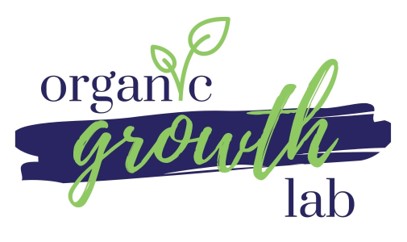The AI tools market has exploded, with thousands of new applications launching monthly. Whether you’ve built an AI writing assistant, image generator, or business automation tool, getting discovered among the competition requires strategic optimization. This comprehensive guide reveals proven strategies to boost your AI tool’s ranking across major directories and search platforms.
Understanding AI Tool Discovery Platforms
AI tools gain visibility through multiple channels, each with unique ranking algorithms and optimization opportunities. The primary platforms include dedicated AI directories like There’s An AI For That, Futurepedia, and AI Tool Hunt, alongside traditional search engines, product hunt platforms, and specialized marketplaces.
These platforms typically evaluate tools based on user engagement metrics, content quality, social proof, and technical performance. Understanding these ranking factors forms the foundation of effective AI tool optimization.
Optimize Your Tool’s Core Information
Craft a Compelling Tool Name and Tagline
Your tool’s name should be memorable, brandable, and hint at its functionality without being overly generic. Avoid names that are too similar to existing popular tools. Create a concise tagline that immediately communicates your value proposition using keywords your target audience searches for.
Write Keyword-Rich Descriptions
Develop multiple description lengths for different platforms. Your short description should be a powerful one-liner that includes primary keywords. The detailed description should thoroughly explain features, use cases, and benefits while naturally incorporating relevant search terms.
Focus on outcome-based language rather than technical jargon. Instead of “advanced neural network processing,” use “generates professional content in seconds.” Include specific keywords like “AI writing tool,” “content generator,” or “business automation” based on your tool’s category.
Select Strategic Categories and Tags
Most platforms allow category selection and tagging. Research which categories have optimal competition levels – not so crowded that you’re buried, but active enough to receive traffic. Use all available tag slots with relevant, searchable terms.
Build Social Proof and Credibility
Gather Authentic User Reviews
Reviews significantly impact rankings across all platforms. Develop a systematic approach to collecting feedback from satisfied users. Reach out to early adopters, beta testers, and active users with personalized requests for honest reviews.
Respond professionally to all reviews, including negative ones. This demonstrates active engagement and commitment to user satisfaction, which platforms notice and reward.
Leverage Social Media Presence
Create dedicated social media accounts for your AI tool across major platforms. Regular posting about updates, use cases, and user success stories builds credibility and drives traffic back to your directory listings.
Showcase Usage Statistics and Achievements
If you have impressive user numbers, processing statistics, or notable achievements, prominently display them. Metrics like “processed over 1 million documents” or “used by 10,000+ businesses” build trust and improve perceived authority.
Content Marketing for AI Tools
Create Educational Content
Develop blog posts, tutorials, and guides related to your tool’s use cases. This content should target keywords your potential users search for, such as “how to automate customer service” or “best practices for AI content creation.”
Develop Use Case Studies
Document specific ways different industries or user types benefit from your tool. These case studies serve as powerful ranking content and help users understand practical applications.
Build Resource Libraries
Create downloadable templates, guides, or toolkits that provide value beyond your main tool. This establishes authority and encourages backlinks from other websites.
Technical Optimization Strategies
Ensure Fast Loading Times
Page speed affects both user experience and search rankings. Optimize images, minimize code, and use content delivery networks to ensure your tool loads quickly across all devices and geographic locations.
Implement Proper Schema Markup
Use structured data markup to help search engines understand your tool’s features, pricing, and reviews. This can improve your appearance in search results and increase click-through rates.
Mobile Optimization
Ensure your tool works flawlessly on mobile devices. Many users discover and test AI tools on smartphones and tablets, making mobile experience crucial for rankings and conversions.
Platform-Specific Optimization Tips
Product Hunt Strategy
Launch timing is crucial on Product Hunt. Tuesday through Thursday launches typically perform best. Build anticipation beforehand through your network and social media. Prepare high-quality visual assets and a compelling story about your tool’s development.
AI Directory Submissions
Each major AI directory has specific submission requirements and ranking factors. Tailor your submissions to each platform’s format while maintaining consistent core messaging. Some directories prioritize recency, others focus on user engagement metrics.
Search Engine Optimization
Create a dedicated landing page optimized for your primary keywords. Include comprehensive information about features, pricing, and use cases. Build high-quality backlinks from relevant industry websites and blogs.
Engagement and Community Building
Active Community Participation
Engage in AI and tech communities on Reddit, Discord, and specialized forums. Provide helpful advice and insights without being overly promotional. This builds reputation and drives organic traffic to your tool.
Collaborate with Influencers
Partner with AI enthusiasts, productivity experts, and industry influencers who align with your tool’s use cases. Authentic endorsements from respected voices carry significant weight in rankings and user trust.
Regular Updates and Communication
Consistently update your tool with new features and improvements. Announce these updates across all platforms where you’re listed. Regular activity signals to algorithms that your tool is actively maintained and evolving.
Analytics and Continuous Improvement
Track Key Metrics
Monitor your rankings across different platforms, traffic sources, conversion rates, and user engagement metrics. Use tools like Google Analytics, platform-specific insights, and specialized AI tool analytics services.
A/B Testing
Continuously test different descriptions, images, and positioning strategies. Small changes in wording or visual presentation can significantly impact click-through rates and conversions.
Competitive Analysis
Regularly analyze top-ranking tools in your category. Identify what makes them successful and adapt proven strategies to your unique value proposition.
Common Ranking Mistakes to Avoid
Avoid keyword stuffing in descriptions, which appears spammy and hurts rankings. Don’t neglect visual assets – poor screenshots or missing demo videos significantly impact user engagement. Failing to respond to user feedback or questions damages your reputation and ranking potential.
Never attempt to game the system with fake reviews or manipulative tactics. Platforms are sophisticated at detecting artificial engagement and impose severe penalties.
Advanced Ranking Strategies
Create Tool Integrations
Develop integrations with popular platforms like Zapier, Slack, or Microsoft Teams. These integrations often appear in search results and provide additional discovery channels.
Thought Leadership Content
Position yourself as an expert in your AI tool’s domain through speaking engagements, podcast appearances, and industry article contributions. This builds authority that translates to improved rankings.
Strategic Partnerships
Form partnerships with complementary AI tools or service providers. Cross-promotion and joint content creation can expand your reach and improve credibility with ranking algorithms.
Measuring Success and ROI
Track both vanity metrics and business outcomes. While higher rankings and increased visibility are important, focus on metrics that impact your business goals: qualified leads, trial conversions, and revenue growth.
Set up comprehensive tracking to understand which optimization efforts provide the best return on investment. This data guides future optimization priorities and budget allocation.
The Future of AI Tool Discovery
As the AI tools landscape continues evolving, discovery mechanisms will become increasingly sophisticated. Voice search optimization, AI-powered recommendation systems, and integration-based discovery will likely gain importance.
Stay ahead by monitoring emerging platforms and ranking factors. The strategies that work today will evolve, requiring continuous adaptation and optimization.
Key Takeaways
Successful AI tool ranking requires a comprehensive approach combining technical optimization, compelling content, social proof, and consistent engagement. Focus on providing genuine value to users while strategically optimizing for discovery platforms.
Remember that rankings are ultimately about connecting your tool with users who will benefit from it. Authentic value creation, combined with smart optimization tactics, creates sustainable ranking success that drives real business growth.
Start implementing these strategies systematically, track your results, and continuously refine your approach based on performance data and platform changes. With patience and consistent effort, your AI tool can achieve prominent rankings and reach its target audience effectively.


